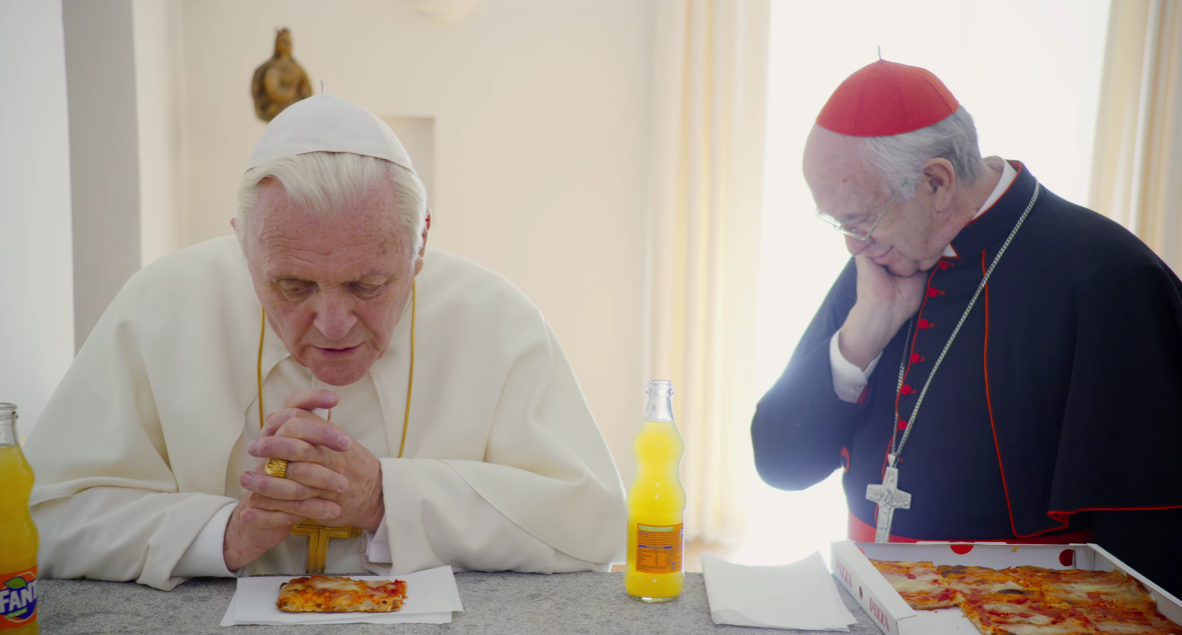In an unexpected yet heartwarming gesture, Pope Francis recently received a delivery that brought a bit of Chicago to the heart of Vatican City — a box of authentic deep-dish pizza, carefully prepared and transported from the Windy City to the papal residence. While the Vatican is a place more commonly associated with centuries-old religious tradition than comfort food, the arrival of this special pizza sparked smiles and offered a brief, flavorful connection to the Pope’s fondness for simple pleasures.
Este especial envío fue más que un acontecimiento caprichoso. Resaltó un momento de intercambio cultural, recordando a muchos la duradera apreciación del Papa Francisco por la comida que refleja la alegría de la vida cotidiana. Conocido por su estilo de vida sencillo y su profunda conexión con las personas, el Papa ha hablado en varias ocasiones sobre su gusto por la pizza, incluso bromeando en el pasado diciendo que extrañaba la libertad de entrar a una pizzería local sin ser reconocido.
The pizza, described as crafted by chefs connected to the Italian-American cooking scene in Chicago, was meticulously packaged to maintain its warmth and unique thick crust. Its delivery to the Vatican was coordinated by fans and patrons who wished to present the Pope with a familiar flavor in a considerate and respectful manner. Considering Pope Francis comes from Argentina, a nation with a significant Italian immigrant influence and strong culinary heritage, the act held cultural significance on various levels.
Esto no es la primera ocasión en la que la comida ha actuado como un vínculo simbólico para el Papa Francisco. Durante su papado, ha mencionado frecuentemente las comidas y la cocina en sus sermones y discursos públicos como símbolos de comunidad, sustento, y la relevancia de compartir. Por ejemplo, ha comparado el acto de compartir el pan con el fomento de la unidad, especialmente en un mundo que a menudo parece dividido por la desigualdad y la discordia.
Upon graciously receiving the pizza, the Pope once more showcased his warm demeanor and his knack for finding happiness in life’s modest experiences. In contrast to grand ceremonies or formal diplomatic events, the delivery of a pizza at the Vatican drew attention for another reason: it served as a reminder of common humanity, even in the most hallowed places.
The press office of the Vatican did not provide an official comment about the pizza; however, individuals familiar with the occasion implied that the Pope appreciated it in a quiet manner, without any publicity. The delivery followed proper security measures, and the Vatican personnel made sure the event stayed respectful and aligned with the dignity of the Holy See.
For many Catholics and observers around the world, this story offered a lighthearted counterpoint to the often heavy and complex matters discussed within Vatican walls. It reminded people that faith leaders, no matter how revered, are still human — and sometimes, all it takes is a slice of pizza to bring a moment of comfort and joy.
El instante también provocó discusiones sobre cómo los gestos simples pueden tener un significado profundo. En una era en la que los titulares globales suelen estar dominados por conflictos, polarización política e incertidumbre económica, relatos como este ofrecen una perspectiva renovadora. Nos recuerdan que la cultura, la amabilidad y las experiencias compartidas todavía tienen el poder de ir más allá de las fronteras, incluso de los antiguos muros de piedra de la Ciudad del Vaticano.
Furthermore, the pizza delivery subtly illustrated the continuing bond between Italian-American communities and the Vatican. Chicago, in particular, has a strong Catholic heritage and a significant population that maintains deep spiritual and cultural connections with the Holy See. The gesture may also inspire similar efforts by faithful communities around the world to share their traditions with the Church in creative, respectful ways.
In many ways, this pizza story echoes Pope Francis’s broader philosophy: that faith is lived through acts of humility, joy, and connection. Whether advocating for the poor, urging environmental responsibility, or encouraging young people to engage with their communities, his approach has consistently focused on the relational and the real — and this simple act of sharing food fits seamlessly within that ethos.
Although the pizza itself might have vanished by now, the tale persists in reaching various media outlets and social networks, admired not solely for its uniqueness but for the joy it generated. It serves as a testament to the timeless human craving for solace, heritage, and the minor pleasures that connect us across different countries and cultures.
In a world that often feels complicated and fragmented, the story of a Chicago-style pizza arriving at the Vatican stands out as a flavorful reminder that joy can be shared in the most unexpected ways — and sometimes, that joy is delivered in a cardboard box.

